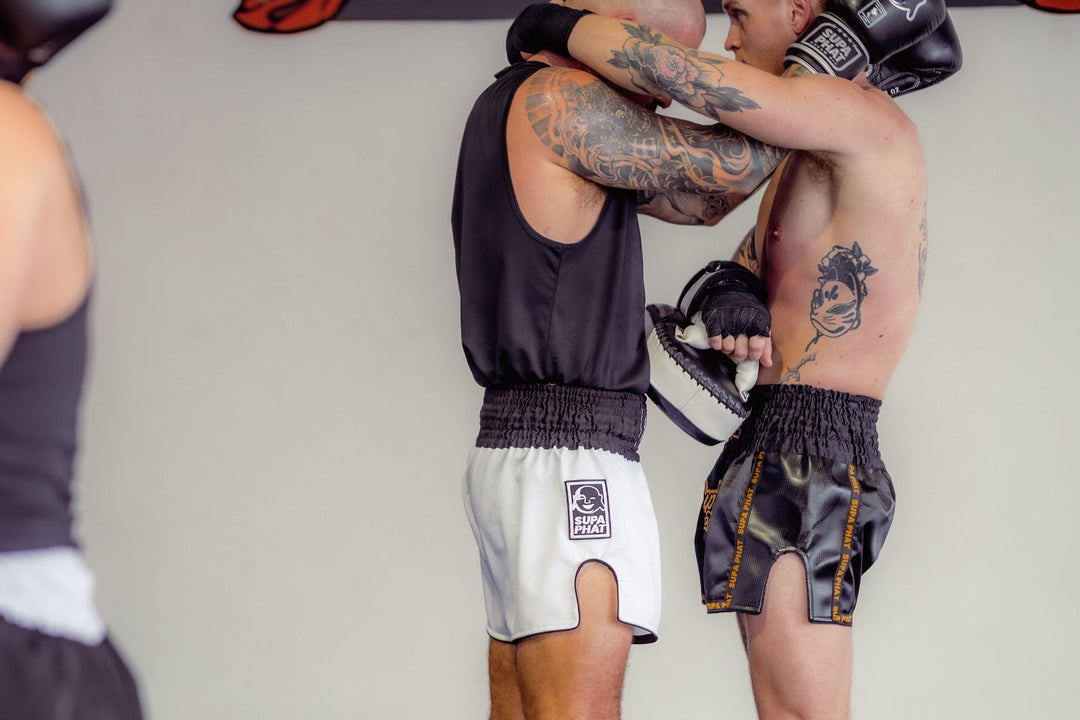Muay Thai for Dummies
An Introduction to the Art of Eight Limbs
Muay Thai, often referred to as the "Art of Eight Limbs," is a striking martial art originating from Thailand. It is known for its powerful strikes using fists, elbows, knees, and shins. For beginners, the sport can seem complex with its varied techniques and intense physical demands, but with the right guidance, anyone can get started. Whether you’re looking to get fit, learn self-defense, or compete, Muay Thai has something for everyone.
What is Muay Thai?
Muay Thai has a rich history that dates back centuries in Thailand, where it was originally used by soldiers in battle. The martial art uses all parts of the body, including the fists, elbows, knees, and shins, to strike opponents. What sets Muay Thai apart from other martial arts is its emphasis on clinching, a form of close-range fighting where the opponent’s posture is controlled to deliver devastating knee strikes.
The core of Muay Thai is not just about fighting but also about respect, discipline, and the constant development of oneself both mentally and physically.

Key Techniques in Muay Thai
Muay Thai techniques revolve around the concept of using all eight points of contact to strike. Let’s break down the basics:
- Jab (Tee): A basic, quick punch thrown with the lead hand. Often used to set up other strikes or maintain distance.
- Cross (Kao): A powerful punch thrown with the rear hand, often following the jab to land a solid strike.
- Elbow Strikes (Sok): These can be delivered from many angles, and are incredibly effective in close-range combat.
- Knee Strikes (Khao): Powerful strikes using the knee, typically performed in the clinch.
- Kick (Te): The roundhouse kick is the most common, where the shin is used to strike the opponent. Kicks are often aimed at the legs, body, or head.
- Shin Strikes (Teh): Muay Thai practitioners condition their shins to strike with devastating force. These are usually delivered to an opponent's legs, midsection, or head.
- Clinch (Plum): This is the phase of the fight where both fighters are up close. The goal is to control the opponent’s head and posture while delivering knee strikes or looking for an opening for a throw.
- Sweeps (Takedowns): At certain points during a fight, Muay Thai practitioners may attempt to trip or sweep their opponent’s legs to bring them to the ground.

Why Practice Muay Thai?
- Full-Body Workout: Muay Thai is a high-intensity workout that engages almost every muscle in your body. From the leg work in kicking to the core strength in elbow strikes and the upper body’s involvement in punching, you’ll get a total body workout.
- Improved Cardiovascular Health: Training in Muay Thai pushes your endurance and stamina. The fast-paced nature of the sport improves heart and lung function while burning fat.
- Mental Toughness and Discipline: Muay Thai teaches more than just physical skills; it fosters discipline, focus, and mental resilience. The mental toughness you develop in training can be applied to many areas of life.
- Self-Defense: Muay Thai equips you with the tools to protect yourself in real-life situations. The variety of strikes and clinch techniques make it a highly effective martial art for self-defense.
- Stress Relief and Confidence Boost: Like other forms of intense exercise, Muay Thai can be a great stress reliever. The sense of accomplishment from learning new techniques and the endorphin rush post-training can significantly boost your mood.
Getting Started with Muay Thai
If you're interested in trying Muay Thai, here are a few simple steps to get started:
- Find a Good Gym: Look for a reputable gym that offers beginner-friendly classes. A good gym should have qualified instructors and a welcoming environment.
- Start with the Basics: Don’t rush into advanced techniques right away. Focus on mastering basic stances, footwork, and punches.
- Condition Your Body: Muay Thai requires a strong and resilient body. Incorporate strength training, flexibility, and endurance exercises into your routine to build the physical foundation needed.
- Consistency is Key: Like any skill, Muay Thai requires consistent practice. Attend classes regularly, and don’t be discouraged by setbacks or slow progress.
- Protect Yourself: Invest in proper equipment such as gloves, shin guards, and hand wraps. Protecting your body will allow you to train safely and effectively.
Muay Thai Etiquette and Respect
One of the central principles of Muay Thai is respect. Before stepping onto the mats, you’ll notice fighters paying homage to their instructors, training partners, and the sport itself. This respect is demonstrated through rituals such as the Wai Kru, a dance-like performance that honors the teacher and the art.
Training partners are treated with respect, and safety is paramount. Sparring sessions are conducted with control, as the goal is to learn and improve, not to hurt your opponent.

Muay Thai in Popular Culture
Over the years, Muay Thai has made its way into popular culture, often portrayed in movies and television. Films such as "Ong-Bak" and "The Protector," starring Tony Jaa, showcase the beauty and power of Muay Thai techniques in cinematic fight scenes.
While these films portray Muay Thai in an exciting way, they also highlight the martial art's effectiveness and elegance.
Muay Thai is more than just a martial art; it's a powerful physical and mental discipline. Whether you're training for fitness, self-defense, or competition, you will find that the sport offers numerous benefits. As you embark on your Muay Thai journey, remember to train with respect, patience, and dedication—qualities that will help you both inside and outside the ring.







